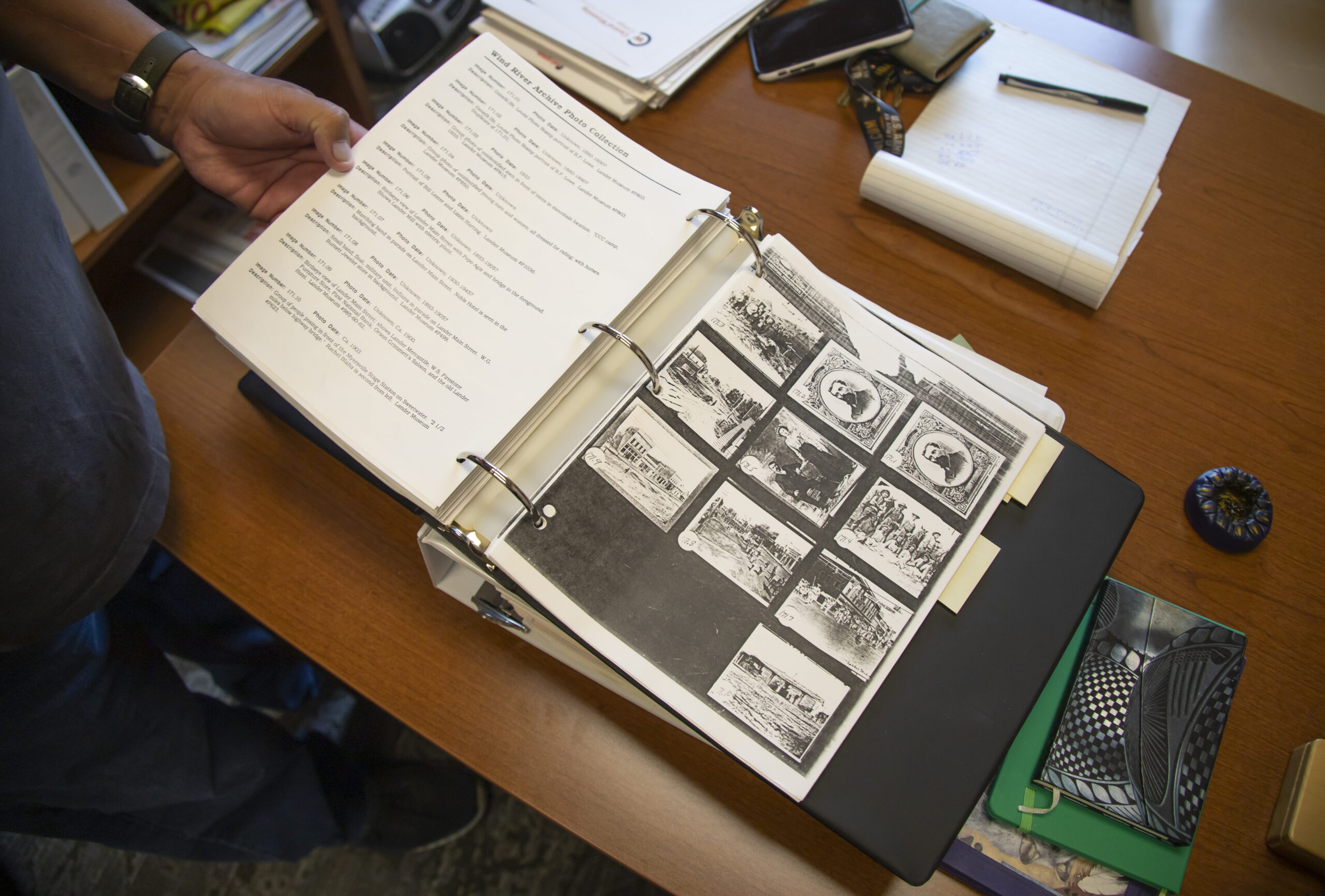(Fremont County, WY) – The Valley of Three Worlds is a major research project relating to the history of Fremont County that was completed in the mid-1980s and recently moved to the care of Central Wyoming College’s Institute of Tribal Learning.
The original collection consists of cassette tapes with stories and area history, the corresponding transcriptions as well as thousands of photographs of the three major cultural communities that make up Fremont County – “Shoshone, Arapaho, and Anglo-European,” according to the project documentation.
CWC’s Tribal Education Services Coordinator and Director of the Institute of Tribal Learning, Ivan Posey, calls this project “a real jewel” of tribal history.
Digitizing the over 110 cassette tapes is a top priority for Ivan. Under perfect circumstances, cassette tapes have an approximately 30-year life span – this project was started 35 years ago in 1986.
Each cassette holds the stories and histories of tribal elders who, except for one, have passed away, according to Ivan. One tape even includes his father who shared stories in his interview that he had never heard before.
This project was directed by Dr. Sharon Kahin and Loren Jost, and funded by a grant from the National Endowment for the Humanities. CWC is listed as the sponsor to create the Wind River Archive for the public, which was slated to open in the fall of 1987 and was to be located in the CWC’s Learning Resource Center, according to the project documentation.
It is unknown just how long the Valley of Three Worlds has been in storage before it was transferred to Ivan’s department, but not many people seem to know it exists.
“I served on the Eastern Shoshone Business Council for 21 years and never knew about this project until I started working here [CWC],” he explained. “Every tribal member I’ve asked about it hasn’t heard of it either.”
The non-tribal portion of the project mainly consists of photographs and only a handful of audio recordings, according to Dr. Kahin.
Some of the photos hanging on the Intertribal Education and Community Center walls are part of the project, and having the finding aids has helped in labeling them. The whereabouts of the rest of the photos is not known.

A project photograph that hangs on the wall of the Intertribal Education and Community Center (County 10 Photo)
The Pioneer Museum in Lander only has a few copies of the photos, but no information and no originals, according to Randy Wise, site manager.
The Riverton Museum has a drawer of photos labeled “Valley of Three Worlds,” but no information, shared Amy Lowery, collections manager.
According to their records, the Dubois Museum has three computer disks, shared Johanna Thompson, site manager. It has an accession number but no specific location other than the “Dubois Museum” and what is on the disks is not known.
Dr. Kahin told County 10 that the American Heritage Center at the University of Wyoming received a copy of the collection. If their online database is correct, they do have a copy of the collection.
Since the information contains histories for both the Eastern Shoshone and Northern Arapaho, Ivan is working closely with Crystal C’Bearing, deputy director for the Northern Arapaho Tribal Historic Preservation Office (NATHPO), who, just like him, had never heard of this project before.
“This is the largest finding [of its kind] that we’ve had come into our office and I’m very excited about it,” she noted. “It’s just kind of like an untapped resource that came out of nowhere.”
They both have plans to utilize this information for educational purposes at both CWC and NATHPO.
“We will use it, somehow, someway,” Ivan shared. “Whether through the institute which does a lot of noncredit classes. We may try to incorporate it into other credit courses but we’ll see how that works out.”
Crystal explained that NATHPO is trying to create a research library center within their office so tribal members can go in and research their family history or do any research they need to do about the Arapaho people.
“This oral history project fits in perfectly,” she said.
There is also the possibility for this project to be part of the curriculum at local schools, but first things first, the audio needs to be preserved.


